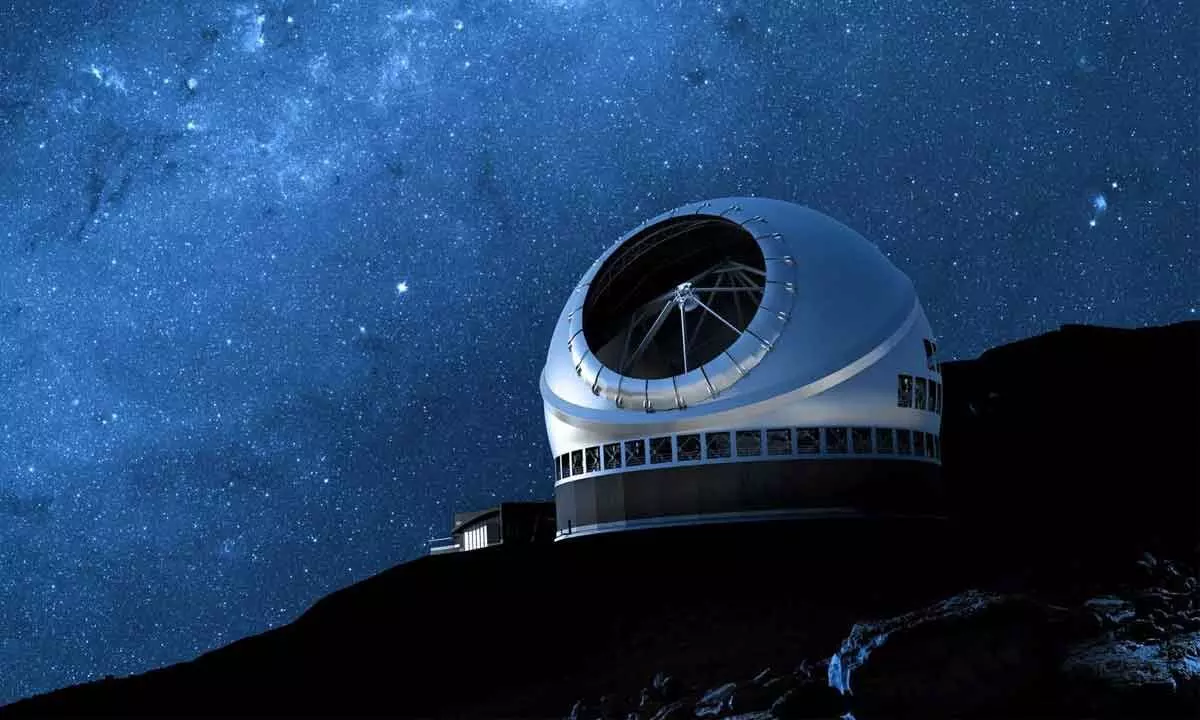Gigantic telescope coming up in Hawaii with Indian help

Mumbai: In a thrilling astronomical development, the world's largest "eye on the universe" -- an optical, infra-red, thirty-metre-telescope (TMT) -- is fast coming up with critical help from Indian scientists, engineers and industries at its proposed location in Mauna Kea on the island of Hawaii in the US. The TMT will be the most gigantic scope ever to be constructed by the world at a cost of over $2.6 billion, with collaboration of India, the US, Japan, Canada and China, said Prasanna Deshmukh, 35, one of the scientists engaged in the mega-project. Hailing from Maharashtra's Sangli, Deshmukh is the work package manager for TMT's primary mirror control system and handling the crucial actuators and edge sensors for the telescope.
The TMT's Indian collaborators are: The Inter-University Centre for Astronomy and Astrophysics (IUCAA), Pune, the Indian Institute of Astrophysics (IIA), Bengaluru, and the Aryabhatta Research Institute of Observational Sciences (ARIES), Nainital.
Deshmukh said, "The TMT will enable us to peek from one light year (in our solar system) to the early Universe, or around 13.7 billion light years away. Consider - The nearest neighbour of our Milky Way Galaxy, the Andromeda Galaxy is some 25.3 lakh light years away. So, imagine the power and reach of the TMT." Presently, the two biggest telescopes - both space-based - are the Hubble Space Telescope (diameter 2.5 m, 1990, 535 km above Earth) and the latest James Webb Space Telescope (diameter 6.5 m, 2021, to be around 15 lakh km far from Earth, orbiting the Sun), considerably smaller compared with the upcoming ground-based TMT which will be five times bigger with a diameter of 30 m.
Through the TMT, scientists will get a better view of planets, stars, galaxies, exo-planets, nebulas, supernovas or pulsars, in unthinkable far-off regions of the seemingly endless Universe, conduct spectroscopy of such heavy objects to study their atmosphere, find out if life exists or can thrive there, scout possibility of a future "cool address" for earthlings, and test out the current varied hypotheses on the reality of aliens somewhere, out there.
















